The Power of Modelling in Geography Education
22 February 2024 - Academic
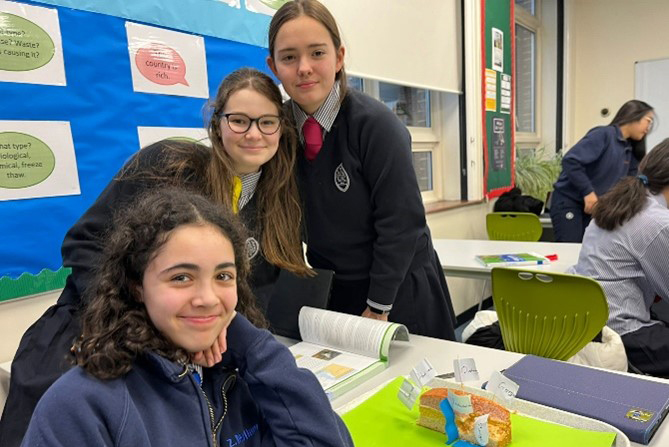
Models provide a strong visual representation of key geographical concepts, making it easier for pupils to understand intricate ideas. This visual clarity enhances conceptual understanding, facilitating better retention and recall. Our Geography Department continuously seeks innovative methods to make abstract concepts tangible and engaging for our girls. In this, we delve into the creative use of Play-Doh as a modelling medium to illustrate the diverse features of rivers and coasts, as well as the use of angel cake to demonstrate waterfalls and the use of ping pong balls to show the Milankovitch cycles. By shaping objects into geographical concepts, pupils have explored the dynamic characteristics of varying landscapes and features in a hands-on and imaginative manner, fostering a deeper understanding of the subject.
The Sweet Cascade: Angel Cake as Waterfalls
Utilising angel cake as a model transformed our Lower Fifth lessons into a culinary laboratory. Pupils actively engaged in creating waterfall models by sculpting the cake layers to represent different geological features. This interactive and delicious approach not only captured the girls’ attention but also fostered a memorable and engaging learning experience. Our teachers drew links between the layers of the cake and the formation of actual waterfall formations, helping pupils appreciate the geological processes that shape our landscapes. These delicious models enhanced the applicability of erosional processes to our real world.
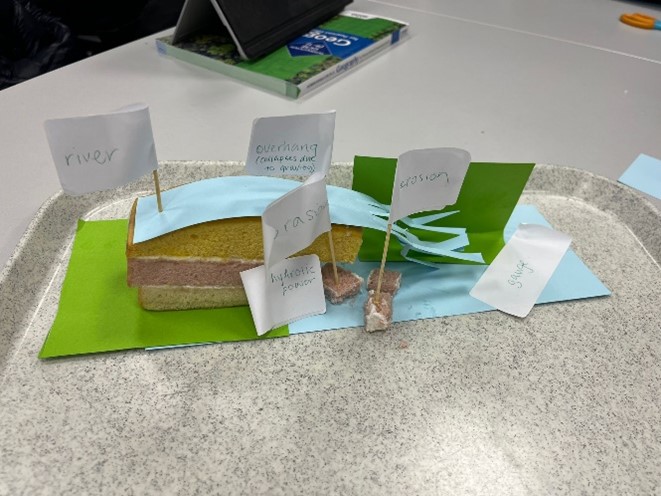
Sculpting Geography: Play-Doh river and coastal features
Play-Doh, with its mouldable nature, provides an excellent platform to visually represent the features of rivers and coasts. Pupils sculpted meanders, oxbow lakes and coastal landforms, creating a tangible representation of the geography associated with these systems. This hands-on approach enhanced challenging concepts, allowing the girls to mould the features they learnt about. The use of Play-Doh helped integrate various disciplines within our geography education. Our girls explored the geological processes shaping rivers and coasts, understood the role of water in shaping our land, and even delved into artistic expressions by creating visually appealing landscapes. This multidisciplinary approach enriched our girls’ learning experience.
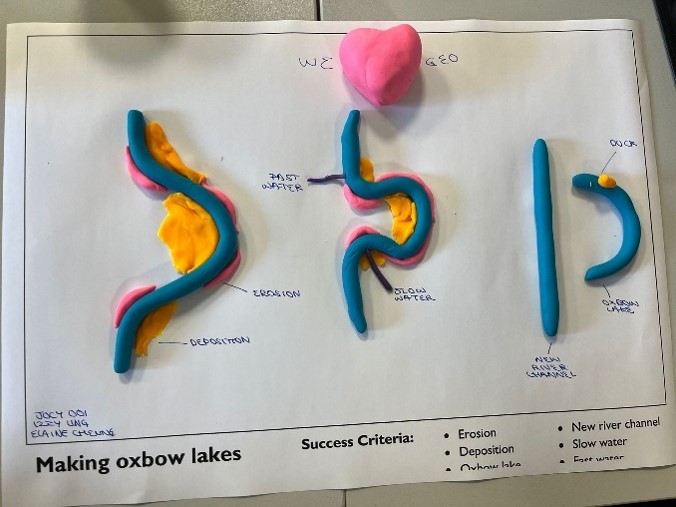
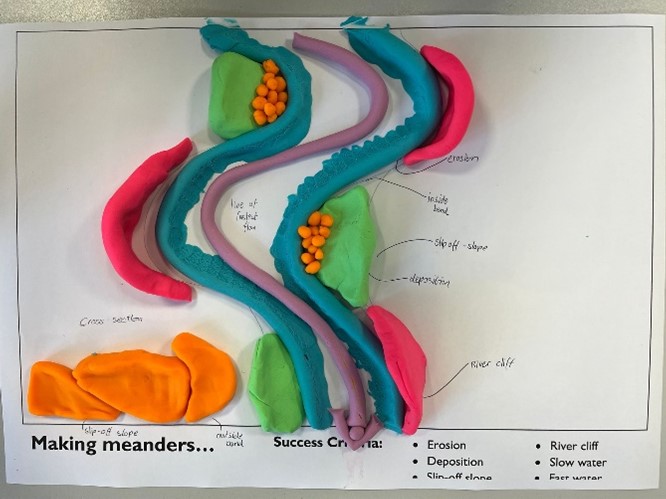
Orbital Choreography: Ping Pong Balls and the Milankovitch Cycles
The interactive nature of using ping pong balls as models transformed our Fifth Form lessons into an engaging celestial workshop. Our girls participated in demonstrating the Milankovitch cycles, manipulating the balls to represent different changes in the Earth’s rotation, and observed how these variations impact our Earth’s climate. This dynamic approach not only captivated the girls but also ensured an immersive and memorable learning experience.
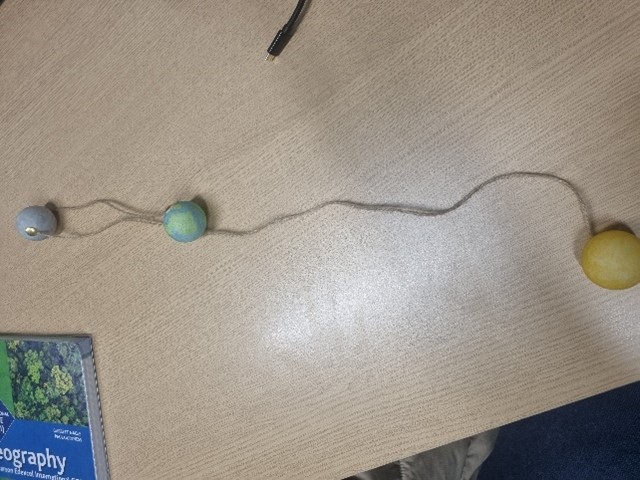
The role of models in Geography is key, serving as dynamic tools that enhance learning outcomes. By incorporating models, we aim to create an interactive and memorable learning experience that many won’t forget. Stay tuned as we will be exploring the use of cotton to demonstrate cloud formations and the water cycle, as well as jelly beans for issues with world population growth.
Mr Simon Bannister
Head of Geography
Keep up to date with further news from Wycombe Abbey on our social channels.